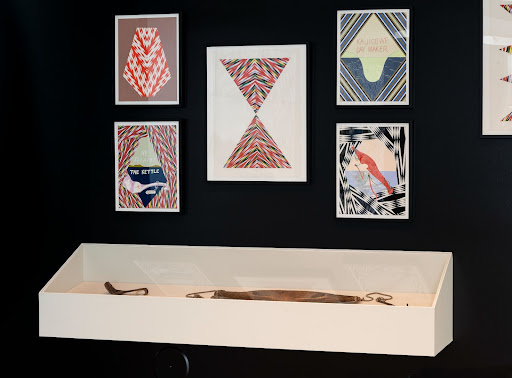Spoon
Wood
Maker unrecorded
Cheboygan, westside of Burt Lake, Michigan, Great Lakes Region
Date unrecorded, donated 1926
Loan courtesy of University of Michigan Museum of Anthropological Archaeology, 1618-a
Yoke
Wood, Cotton
Maker unrecorded
Cheboygan, westside Burt Lake, Michigan, Great Lakes Region
Date unrecorded, donated 1926 from Charles Massy [sic]
Loan courtesy of University of Michigan Museum of Anthropological Archaeology, 1636
In addition to paintings and poems, Carlson’s cache includes two objects she selected from the collection of the University of Michigan Museum of Anthropological Archaeology: a wooden spoon and yoke. The original makers, owners, and circumstances of these well-worn objects are unrecorded. All we know is the approximate location in which they were reportedly found (Cheboygan county, on the west side of Burt Lake) and the year they were donated to the U-M collection (1926).
Inspired by these objects, Carlson represents them in her paintings A Selfish Man (above case, bottom left) and Nibi (above case, bottom right). A Selfish Man refers to the Anishinaabe cultural practice of prohibiting men from scraping the remaining food from the bottom of a kettle, as women are viewed as being more equitable in the distribution of resources. The word “nibi” means “water” in Anishinaabemowin and references the practice of resting a wooden yoke across one’s shoulders to carry vessels of water. In Carlson’s paintings, these objects appear to float in front of portal views onto the crystalline waters of Burt Lake—as if they are from this place, but decidedly displaced.

